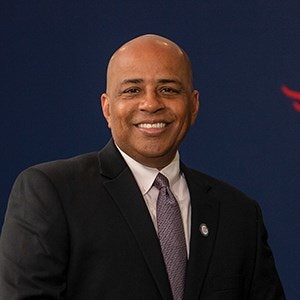Do you live in or did you grow up in “sparse country”? Has anyone ever declared that they live in sparse country? Yet this is exactly how Harvard describes the 20 states it looks to for student geographic diversity. Harvard really doesn’t need to worry about recruiting students; it’s a powerful magnet that attracts applicants from all parts of the U.S. and the world.
Most other institutions need effective strategies for widening the student pool. Indeed, we’re missing too many students from rural parts of the country and we’re especially missing students of color from rural areas. Diversity, of course, enriches all our campuses. My own college journey started at Tuskegee University in rural Alabama. After growing up in Chicago, finding myself in the Deep South was an adjustment and one I’m thankful I made; it broadened my views of the world and of people. Dr. Ronald S. Rochon
Dr. Ronald S. Rochon
Various studies report that roughly 21% of rural Americans identify as people of color or nonwhite, and in some areas this percentage is growing. Researchers also have found that rural communities with the highest unemployment rates are below the rural America average for people attaining some college education.
Part of growing up rural in this country involves internalizing messages about living in sparse country, living in the middle of nowhere or being a “from the sticks.” Although the research regarding how these cultural messages affect college attendance and persistence is thin, it is reasonable to assume the messages have a negative effect.
Our institution, the University of Southern Indiana, is committed to helping everyone achieve. While that achievement extends to students in rural communities, we recognize we need to do more. We believe enrolling students in a summer bridge program before their freshman semester will aid first generation attendees and students of color, including those from rural communities.
Research on one summer bridge program found that students began with significantly lower test scores and high school grades than other students. Yet all the summer students eventually “achieved significantly higher college GPAs and were retained to the second and third year at significantly higher rates.”
At the national level, the Success for Rural Students and Communities Act provides an interesting approach that seems like it will work. A bipartisan group of lawmakers introduced the bill; it will encourage local stakeholders from higher ed institutions, school districts, economic development agencies and others to develop local solutions.
These stakeholders will find ways to create or strengthen post-secondary programs and training opportunities in locally relevant fields. They’ll generate local and regional development strategies that will create employment opportunities for students with post-secondary degrees. The programs will provide student support beginning in the critical middle school years and continuing seamlessly through college graduation. This initiative will fill a gap which current federal initiatives don’t fully meet.
Supporters point to philanthropic initiatives like rootEd Alliance, which rely on dedicated college advisors to aid students in their plans after they graduate from high school. More than 20% of college-bound students said they would not have enrolled in college if not for their rootEd advisor. The Success for Rural Students and Communities Act also will bind universities and neighbors together in a unique way; the grant proposals and their implementation will help university and community leaders understand how the other is focused on helping students succeed and the local economy grow.
My experience as an urban student originally from Chicago was enriched by my interactions with rural students from Alabama. If we can increase college attendance rates for rural Americans, we’ll inevitably improve the effectiveness of American democracy and the economy. Certainly, there is no more worthy goal than that one.
Dr. Ronald S. Rochon is president of the University of Southern Indiana















